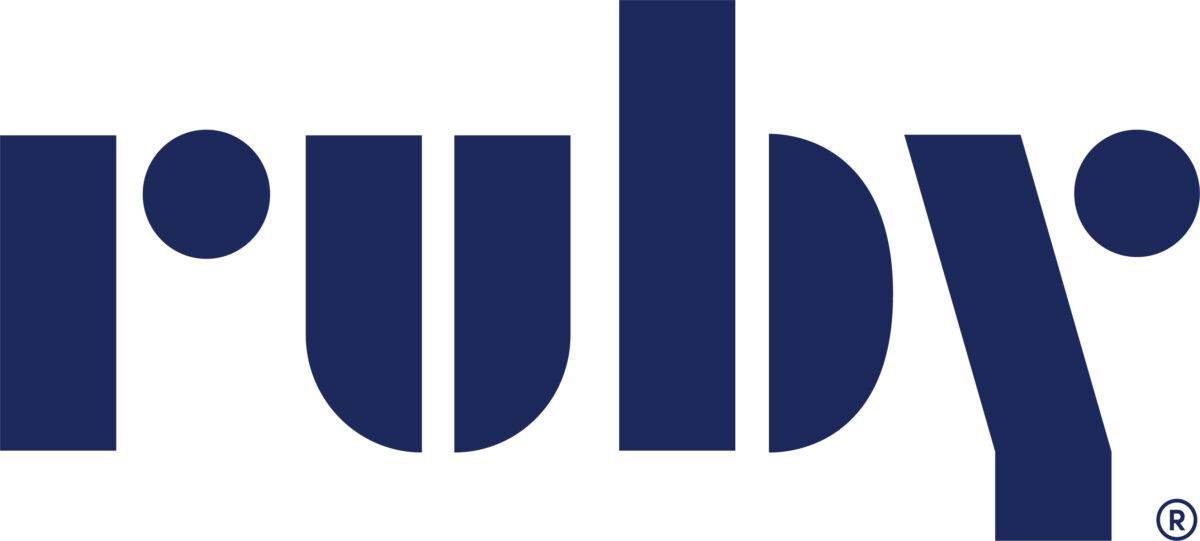On Thursday evening, November 20th, about 15 Ruby Receptionists headed over to the Oregon Food Bank to volunteer. Prior to the event, there were a few misconceptions about what we would be doing. Personally, I imagined a small, classroom-sized area with a couple of tables filled with donated food from food drives. I thought perhaps we would put them in bags to be donated to families in the area that would have a hard time of it this holiday season. Because, you know, no one should go without Thanksgiving dinner.
Instead, we were directed into a large, warehouse-type room with giant crates of oranges and carrots. We were only a small portion of the over 100 volunteers who showed up on this cold and rainy Oregon evening. Many of the other volunteers were from Portland General Electric, and they deserve a shout-out as well.
We put on our aprons, our gloves and our hair nets, and we got to work. I was on orange-bagging duty: nine to ten oranges makes up a 5-pound bag. Others were bagging carrots, and later in the evening there were beets to divide up. All told, the 102 volunteers that donated their time that evening bagged 27,346 lbs of food for hungry families. In one evening, each volunteer handled the equivalent of 206 meals, with a total of 21,035 meals handled in just two hours.
By the end of the shift, our backs were sore and our hands were sweaty and powdered with that stuff in the latex gloves. We had handled more oranges than most of us thought we would see in a lifetime. But we felt like we had made a difference. In addition to the volunteer work, we had run a food drive in the office during the weeks prior to our shift. We donated several bags of food, but there was something about getting down and dirty with thousands of pounds of carrots and oranges that made us feel like we were really making a difference. And we did. The hundreds of volunteers that OFB sees every month equate to 36 full-time year-round employees. This is not something that the food bank would otherwise be able to afford.
At the end of the work shift, we first-timers were offered a tour of the building. At this time I will turn the blog over to my esteemed co-worker Sarah, who put in a tremendous amount of work organizing this event for our office:
I don’t think it was until we took the tour of the food bank that I really understood the magnitude of the organization we were doing this work for. We had a very knowledgeable and friendly guide who took our group on a tour through the building and explained each station and the inner workings of the Oregon Food Bank.
The first stop was the lobby, where they house several conference rooms that are available for free use to all organizations in the community. We were told that these conference rooms were created as a way of giving back to the community and helping to build its strength. Also in the lobby, our tour guide explained that the art on the walls was a way of telling a story about the roots of food banking. The art told the old story of “stone soup” in which a man teaches a village to share by contributing individual ingredients in order to create a feast for the whole community.
Although it was a typical dark, rainy northwest winter evening and we weren’t able to see much outside the building, we were told about the fully edible landscaping around the building and the 1/3-acre teaching garden. The teaching garden is where professional gardeners volunteer their time to teach people in the community how to grow their own food. We learned about how the food bank is not only about giving people in need a box of food and sending them on their way–it is also about working toward change and self-sustainability. There are also many programs in place to help people learn to maximize their nutrition on a small budget, including workshops and cooking classes taught by local volunteer chefs. We saw the big training kitchen where those classes are held, and it was nice to know that so much more than I ever imagined is going on on at our local food bank.
The next stop in the tour was a state-of-the-art room where volunteers redistribute meats, cheeses, and eggs. Our guide explained that volunteers work amazingly quickly to examine foods for safety and get them into the hands of people who need them within 24 hours of receiving these donations from local grocery stores. We then took a walk through a huge warehouse that was set up a little like a Costco with large pallets of food stacked in shelving structures. We also took a very chilly step into the 8,500 square foot freezer and 4,000 square foot cooler. The freezer is kept at a shiver-inducing -10 degrees Fahrenheit.
It was hard not to notice that there were a lot of empty shelves in the food bank. Our guide explained that with the current economic crisis, the need for emergency food has risen by about 19% overall, and up to 43% in some areas. This food bank provides for organizations all over the state of Oregon, so their supplies are going out about as quickly as they are coming in. I’ve heard the news stories and we’ve all seen the rising gas and food prices, but being in that big room with all the empty shelves made it all hit home a little harder for me. It made me realize just how important our little two hours of work bagging oranges could be and how important it is to continue give what we can to our community as we struggle to get through these hard times. It also made me feel really happy that an organization like the Oregon Food Bank exisists.
After the tour, we came back to the room in which we had bagged oranges and our guide gave us a breakdown of the numbers for the night (which Kendra mentioned above!). When he told us that our shift had bagged 27,000+ pounds of oranges, I was really amazed to see that just a few hours of hard work can make such a difference! Our small team of 15 Rubies helped to prepare meals for over 3,000 people in just a few hours!
Seeing the food bank in all of its glory and hearing all of the numbers and stories about how we Oregonians are lucky enough to have one of the largest and most state-of-the-art food banks in the nation made me feel really proud to be an Oregonian and to be able to be a tiny little part of this. And standing there with my tired (but committed) co-workers who were giving up their free time to make a little diffence in the community also made me feel really proud to be a “Ruby” that night.
It was a night of learning and hard work, but in the end, I think we all left feeling a little more connected and proud of our time spent there.



